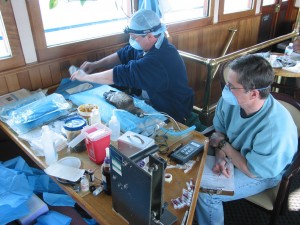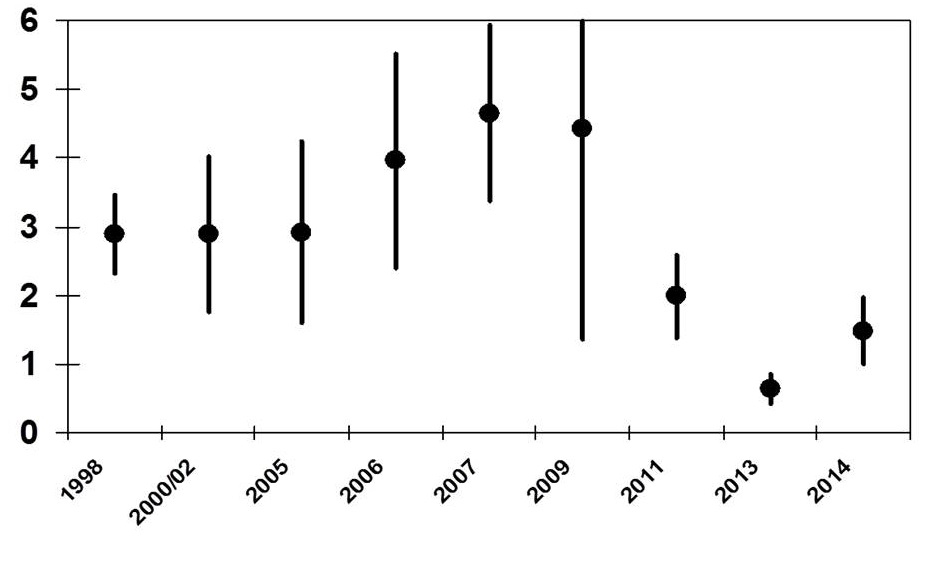This project was completed in 2016.
Why were we sampling?
Harlequin duck and sea otter populations in Prince William Sound (PWS) were injured as a result of the 1989 Exxon Valdez oil spill based on evidence that many animals died immediately and longer term injury occurred as a result of chronic exposure to oil after the spill. The purpose of this study was to evaluate how well harlequin ducks and sea otters in PWS have recovered from the spill and the potential health consequences of ongoing or previous exposure.
Where were we sampling?
We were sampling in oiled and un-oiled sites in Prince William Sound and taking our measurements concurrently with the lingering oil Polyaromatic Hydrocarbon (PAH) monitoring program (see Mark Carls, Gulf Watch principal investigator). Areas sampled in PWS included: Bay of Isles, Herring Bay, Crafton Island, Lower Passage, and Green Island, as well as at nearby un-oiled northwestern Montague Island.

Veterinarians Malcom McAdie and Jeff Proudfoot perform surgery to nonlethally remove a small liver biopsy from a harlequin duck in Prince William Sounds, as part of studies evaluating biomarker indication of continued exposure to lingering Exxon Valdez oil.
How were we sampling?
We captured ducks and otters in the oiled and un-oiled sites using a variety of sampling methods and collect tissue samples in a non-lethal manner and release the animals. The tissue samples were analyzed by assaying biomarkers (measurable indicators of biological state or condition) to determine the degree of continued exposure to lingering oil.
What did we find?
We interpreted the data from March 2014 to indicate that harlequin ducks and sea otters are no longer being exposed to lingering oil in PWS, 25 years after the spill (see figure).

Proportion (y-axis) of captured harlequin ducks with the biomarker of elevated hepatic7-ethoxyresorufin-O-deethylase (EROD) activity, defined as two times the average among birds from unoiled areas. Data include results from this study (March 2014) contrasted against findings from previous years.






